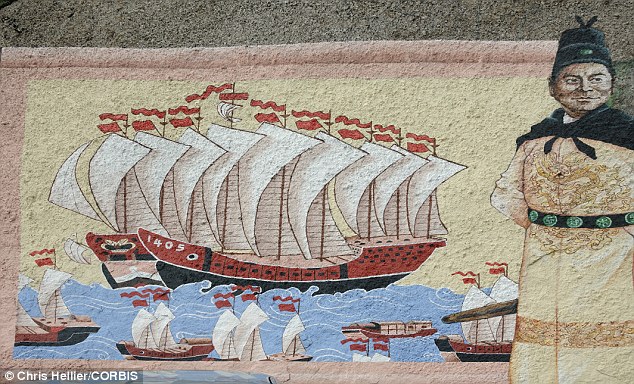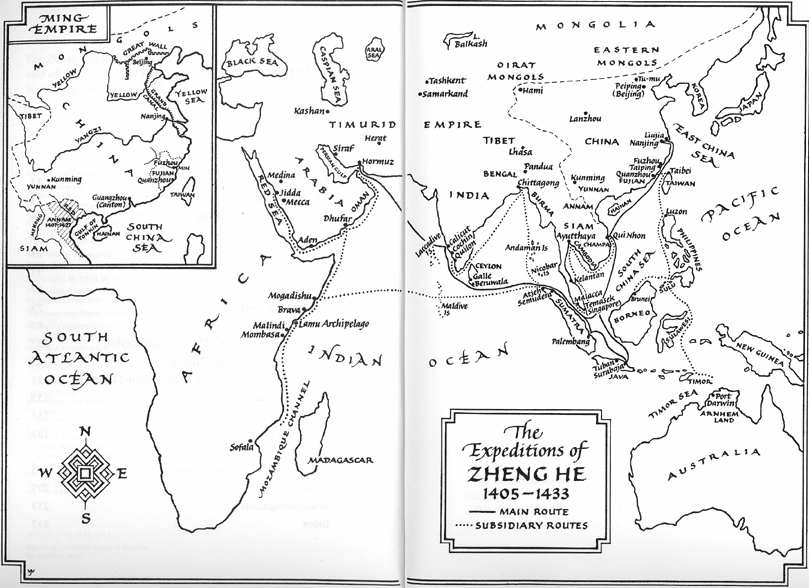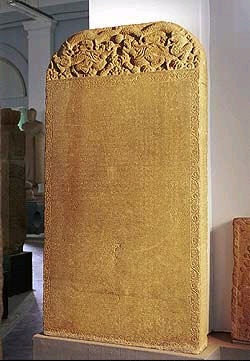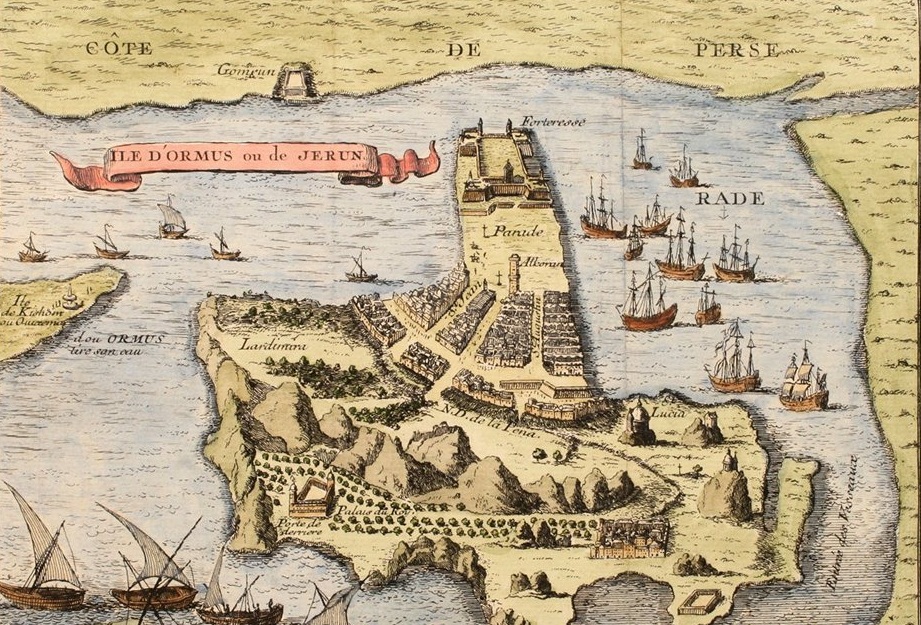Admiral Zheng He (1371–1433) was the famous Chinese admiral explorer and diplomat who was of Persian ancestry. His great great great grandfather was a Persian called Shams al-Din Omar, who was appointed as governor of Yunnan during the Yuan Dynasty (1271-1368). His great grandfather’s name was Bayan.

Chinese Admiral Zheng He is recognized for having sailed with his giant fleet to Europe and Africa. Historian Gavin Menzies has proposed that Zheng He also reached the New World (Source: Chris Heller/CORBIS & The Mail). For more on the exploits of Admiral Zhang He, see here…
Below is a map of the expeditions of the Chinese Admiral Zheng He (1371–1433):
 The above map is based on a Chinese original drawn during the 15th century (Source: Ellis & Esler, World History: Connections to Today, Prentice Hall, 1999). Note that the body of water below Iran is clearly marked as “Persian Gulf“ and not by any other terminology.
The above map is based on a Chinese original drawn during the 15th century (Source: Ellis & Esler, World History: Connections to Today, Prentice Hall, 1999). Note that the body of water below Iran is clearly marked as “Persian Gulf“ and not by any other terminology.
Zheng He is credited with having taught the Siamese water treatment and the fertilization of farmlands. It was in 1911, when the “Zheng He Stele” dated to 1409 was finally discovered in Sri Lanka. The stele not only cites of Zheng He’s generous donations to the local Buddhist temple. Also, much like his Iranian ancestral spirit of tolerance, Zheng He and his crew paid respect to all of the local deities and customs.

The Zheng He stele which has inscriptions in Chinese, Tamil and Persian languages (Source: 4.bp.blogspot). It is notable that Zheng He made a determined effort to pay equal homage to all of Sri Lanka’s religions.
By the time of his passing, Zheng He had visited 38 countries in an epic 28 years.
A visual history of the epic voyages of the large fleet of admiral Admiral Zheng He (1371–1433) by the Kings and Generals venue (Source: “Zheng He’s Floating City: When China Dominated the Oceans” in YouTube).
Ironically, in 1433, Zheng He died while returning from a trip to his ancestral homeland, Iran, specifically at the Kingdom of Hormuz within the Persian Gulf! As the case with many great admirals, Zheng He was to be buried at sea.

The Kingdom of Hormuz as depicted in a European map by Bellin in 1746 (Picture source: Map and Maps). Also known as Ohrmuzd, the term “Hormuz” is another variation of the Zoroastrian term “Ohrmazd” (the supreme monotheistic spiritual entity). By the 13th century Hormuz was under the rule of Persia. Zheng He made his final voyage to this island in the Persian Gulf.



